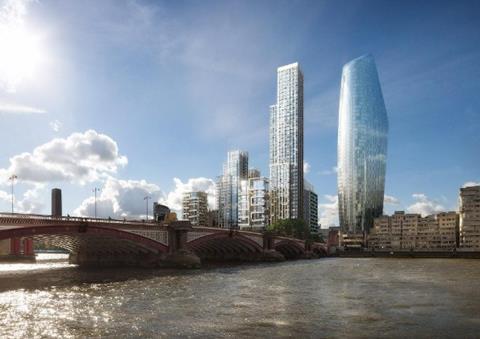Report by group of architects says more mid-rise towers needed
A report out today says that more blocks of between five and eight storeys should be built to address London’s housing shortage – while demanding that ‘trophy towers’ which it says are “dropped at random” into the capital be stopped.
Pollard Thomas Edwards, HTA, Levitt Bernstein and PRP Architects are behind the report – called Superdensity – which is a follow-up to findings the quartet first published back in 2007.
“We are concerned about the immediate social and environmental impacts of very dense developments and their long-term sustainability,” the report says. “We also observe that this new superdensity – which we’ve dubbed hyperdensity when it’s over 350 homes or dwellings per hectare – derives, not from London’s distinctive and popular urban forms, but from global development patterns.
“We may well ask, is London becoming a victim of its own success, meeting demand by sacrificing the very distinctiveness which makes people want to live and work here?”
The report says hyperdensity should be ditched and that more emphasis be given to developments of between five and eight storeys along with greater promotion of street life. It said tall towers have a role to play “provided they are integrated with other typologies and contribute to the creation of successful street and other public realm. We must avoid trophy towers dropped at random into our unique city.”
And it says areas of the capital should not become ghettos for the rich. “London’s residential neighbourhoods have evolved by successfully integrating diverse people of different income, age and household size. Larger developments should contain a balance of homes for families, the elderly and young people.”
Pollard Thomas Edwards senior partner Andrew Beharrell warned: “We are sleep-walking into hyperdense development without proper regard for the long-term consequences.”
And HTA managing partner Ben Derbyshire added: “One of the reasons London has become such a desirable destination for people from all around the world is our street life, which is so easily threatened by the move to hyperdensity.”
According to a survey by New London Architecture earlier this year, the number of towers over 20 storeys being planned for London has gone up more than 10% in the past 12 months to 263. It said that 80% of the towers being planned or built are earmarked for residential use.
The report’s 10 point plan
Adopt mid-rise to meet London’s housing needs
Resist ‘hyperdensity’
Integrate towers with street-based typologies
Promote street life
Build on London’s tradition of mixed communities
Provide a wider range of housing typologies
Harness space above public buildings
Design for management
Make service charges affordable for all
Develop new funding streams for long term management
Source
This story first appeared on Building Design.




























No comments yet